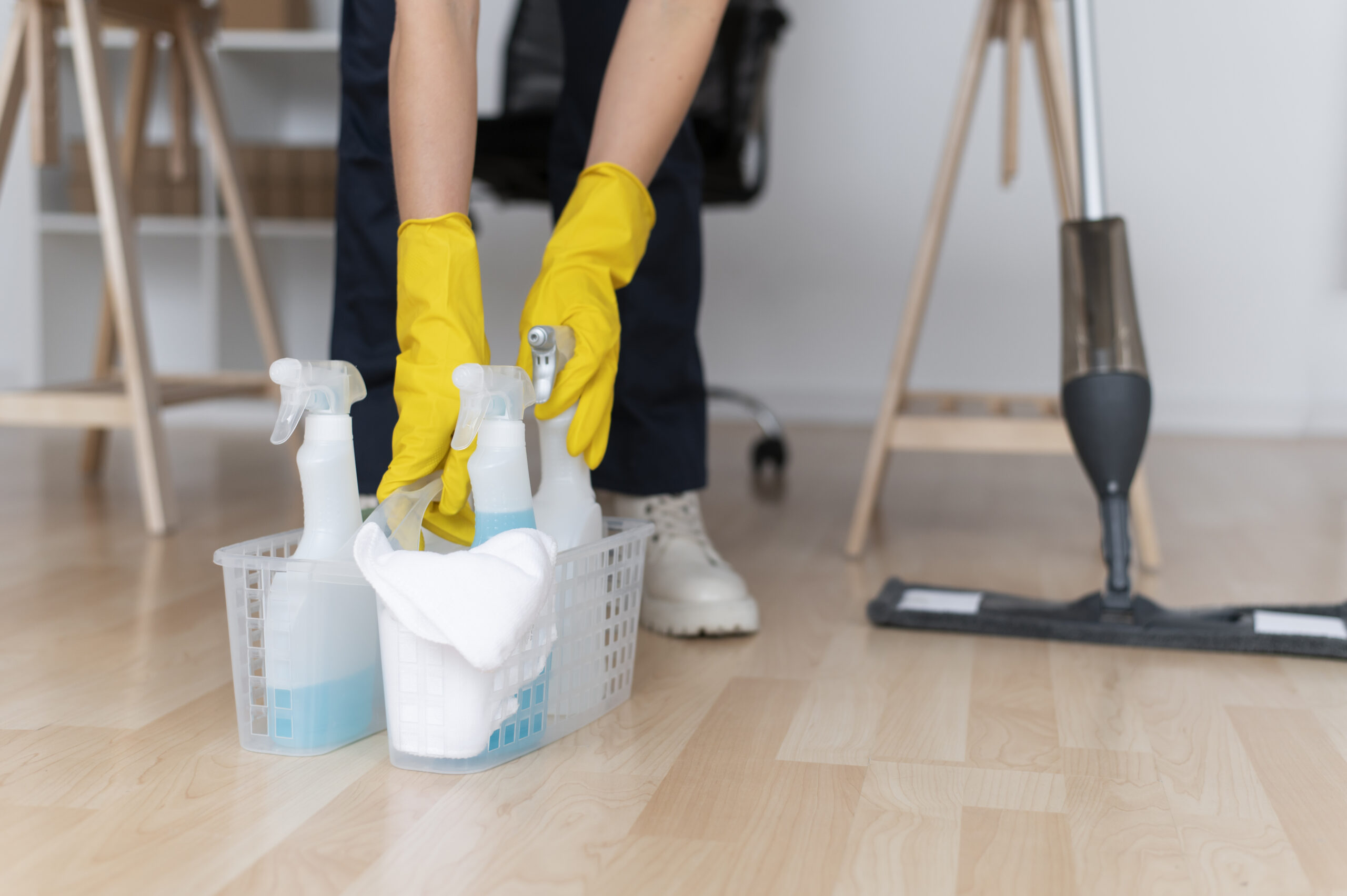When it comes to creating pristine and durable flooring, the use of specialized chemicals is often indispensable. From adhesives to sealants and cleaners, these substances play a pivotal role. However, the path to perfection isn’t without its risks. The handling of flooring chemicals necessitates a keen understanding of potential health hazards and the implementation of rigorous safety measures.
In this comprehensive guide, we delve into the world of flooring chemicals, exploring the health risks associated with their handling and the critical safety precautions that professionals and enthusiasts alike must consider. Understanding these facets is not just a matter of efficiency but, more importantly, a safeguard for one’s well-being. Continue reading to learn more.
Health Risks in Handling Flooring Chemicals
Skin Irritation
Direct contact with flooring chemicals can actually lead to various degrees of skin reactions, ranging from mild irritation to severe dermatitis. The abrasive nature of certain chemicals, coupled with prolonged exposure or inadequate protective measures, can cause redness, itching, or even blistering of the skin.
Professionals in the field must then prioritize the use of appropriate personal protective equipment, such as gloves and protective clothing, to shield against potential skin contact and minimize the risk of these distressing skin irritations.
Respiratory Issues
Respiratory issues also pose a significant health risk when handling floor chemicals, primarily due to inhalation of fumes, vapors, or dust particles emitted during application or preparation. These chemicals can release volatile organic compounds (VOCs) or fine particles that, when breathed in, may lead to respiratory irritation, coughing, wheezing, or more severe complications like asthma exacerbation.
Proper ventilation and the use of respirators or masks are imperative precautions to mitigate the risk of respiratory problems, safeguarding the well-being of workers against these potential hazards.
Eye Irritation
Splashes, fumes, or direct contact with flooring chemicals can cause immediate discomfort, ranging from mild irritation to severe corrosion or damage to the eyes. The eyes are highly sensitive to chemical exposure, and without adequate protection such as goggles or safety glasses, individuals are susceptible to redness, itching, tearing, or even more severe consequences like blurred vision or burns.
Therefore, it is important to prioritize the use of proper eye protection to prevent such incidents and safeguard against potential eye irritation or injury when working with flooring chemicals.
Allergic Reactions
Certain individuals may be predisposed to allergic responses upon exposure to specific chemical components present in flooring substances. These reactions can manifest in various ways, from skin rashes and hives to respiratory distress and even severe anaphylactic shock in extreme cases.
Identifying potential allergens within these chemicals and ensuring proper protective measures, including personal protective equipment and adherence to safety protocols, is crucial in minimizing the risk of triggering allergic reactions among workers or individuals involved in handling flooring chemicals.
Safety Precautions in Handling Flooring Chemicals
Personal Protective Equipment
Wearing adequate personal protective equipment, or PPE, stands as a fundamental safety precaution in the handling of floor chemicals. Employing gloves, goggles, masks or respirators, and protective clothing forms a crucial barrier between individuals and potentially hazardous substances. These protective gears shield against skin contact, inhalation of fumes, eye irritation, and other potential health risks associated with handling flooring chemicals.
Ventilation
Adequate airflow and proper ventilation systems are essential to mitigate the accumulation of fumes, vapors, or dust particles released by these substances — thus, among the important safety precautions in handling flooring chemicals. Effective ventilation helps disperse harmful airborne elements, minimizing the risk of respiratory issues and ensuring a healthier environment for workers.
Whether working indoors or in confined spaces, implementing proper ventilation measures is crucial to maintaining air quality and reducing the concentration of potentially hazardous substances, thereby safeguarding the well-being of individuals handling flooring chemicals.
Storage and Handling
It is also important to store flooring chemicals in designated areas, ideally in well-ventilated spaces, and using labeled, tightly sealed containers to help prevent accidental spills or leaks. Separating incompatible chemicals and adhering to specific storage requirements outlined in safety data sheets (SDS) minimize the risk of chemical reactions and potential hazards.
Additionally, handling these substances with care, following manufacturer instructions for transport and use, significantly reduces the likelihood of accidents or exposure, promoting a safer working environment for everyone involved in the handling and application of flooring chemicals.
Emergency Preparedness
It is also important to be emergency prepared, being a critical safety precaution in the handling of floor chemicals. Establishing comprehensive plans and protocols for potential accidents or exposure incidents is imperative. Accessible emergency equipment like eyewash stations, emergency showers, and first aid kits should be readily available and clearly marked in work areas. Additionally, ensuring all personnel are trained in emergency procedures, including swift response to spills, leaks, or exposure situations, can mitigate the severity of accidents and minimize health risks.
Preparedness not only enhances the ability to address emergencies effectively but also underscores the commitment to maintaining a safe environment when working with flooring chemicals.
Proper Disposal
Proper disposal of floor chemicals is a crucial safety precaution that completes the lifecycle of handling these substances. Following local regulations and guidelines for disposal is essential to prevent environmental contamination and potential health hazards. Ensuring that chemicals are disposed of in accordance with safety data sheets (SDS) and manufacturer instructions prevents improper disposal methods that could harm the ecosystem or pose risks to human health.
Key Takeaway
In the intricate realm of handling floor chemicals, awareness of the associated health risks and stringent adherence to safety precautions stand as paramount pillars. From the potential risks of skin irritation, respiratory issues, eye irritation, to the looming threat of allergic reactions, understanding these dangers is crucial. However, implementing meticulous safety measures such as wearing proper personal protective equipment, ensuring adequate ventilation, meticulous storage, emergency preparedness, and responsible disposal empowers individuals to navigate these hazards safely.
By prioritizing safety protocols, professionals ensure not only the quality of their work but also the well-being of all involved, fostering a culture of safety in the meticulous craft of working with flooring chemicals.

